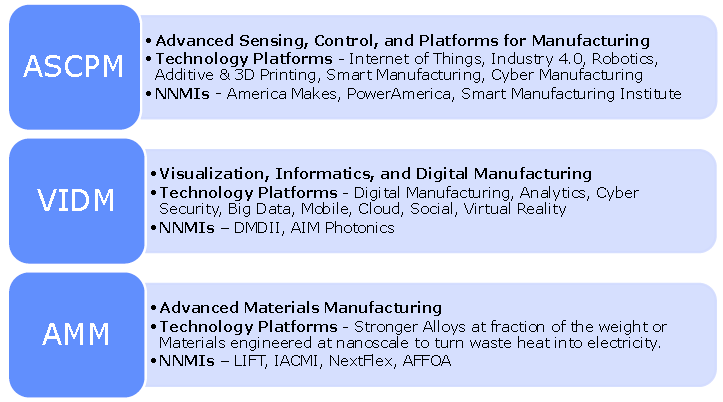Advanced Manufacturing – Adapt or Perish !
Every day, we hear or read of new research and projections of disruptive technologies and emerging business models, such as Internet of Things, Industrial Internet, Industry 4.0, Smart Manufacturing and Digital Manufacturing, which will transform the manufacturing industry.
Larger manufacturing companies, such as GE, Boeing, and Siemens, are harnessing their enormous R&D and other corporate resources to adapt disruptive technologies and emerging business models to transform their enterprises. However, what are the choices for the Small and Medium manufacturing Enterprises (SMEs) which are facing tremendous pressures on a number of business issues, such as profitability, cash flow, workforce development and foreign competition?
Adapt or Perish!
There is only one choice for most of the SMEs – Adapt Advanced Manufacturing-based business models and technologies or Perish! One of the world’s leading experts on innovation and growth is Professor Christensen of Harvard Business School. In his book, The Innovator’s Dilemma, he provided an explanation of failure of respected companies because they ignored disruptive innovations and technologies. Such views are well supported by the case studies of disruptive companies, such as Uber and Airbnb, and disrupted companies, such as Blockbuster and Kodak.
The SMEs need to understand the disruptive forces of Advanced Manufacturing, and develop a Manufacturing Innovation model to adapt applicable technology platforms.
What is Advanced Manufacturing?
The Advance Manufacturing Partnership 2.0 (AMP 2.0) report prepared by the President’s Council of Advisors on Science and Technology on Ensuring American Leadership in Advanced Manufacturing defines ……
“Advanced manufacturing is a family of activities that (a) depend on the use and coordination of information, automation, computation, software, sensing, and networking, and/or (b) make use of cutting edge materials and emerging capabilities enabled by the physical and biological sciences, for example nanotechnology, chemistry, and biology. It involves both new ways to manufacture existing products, and the manufacture of new products emerging from new advanced technologies.
Advanced Manufacturing and National Technology Priorities
The AMP 2.0 report also identified three Manufacturing Technology Areas of high national priority. These are:
- Advanced Sensing, Controls, and Platforms for Manufacturing (ASCPM);
- Visualization, Informatics and Digital Manufacturing (VIDM); and
- Advanced Materials Manufacturing (AMM).
In the above figure, for each national priority area, I have provided some examples of emerging technology platforms, and also noted existing National Network for Manufacturing Innovation (NNMI) institutes which address these priority areas.
National Network for Manufacturing Innovation (NNMI)
The NNMIs are public-private partnerships, and additional information is available at http://www.manufacturing.gov/nnmi-institutes/
One of the goals of the NNMIs is to facilitate the transition of innovative technologies into scalable, cost-effective, and high performing domestic manufacturing capabilities of SMEs.
Manufacturing Innovation Model
At a first step, the SMEs need to develop and adapt a business model which will help them to plan and implement the advanced technologies and related processes in to their manufacturing operations. Such a model need to achieve three goals:
- Train Senior Management to (a) adapt a broader approach to Innovation which is also articulated in the White House document – A Strategy for American Innovation, October 2015. A broader approach includes (a) innovative products, services, processes and execution models; and (b) balancing innovation and lean practices;
- Develop an Innovation and Technology Plan which also leverages government initiatives, such as NNMIs; and
- Implement the plan by integrating Information Technologies (IT) with manufacturing Operation Technologies (OT).
On the National Manufacturing Day 2015, I delivered a lecture at the University of California, Irvine (UCI) Applied Innovation center, and introduced a Manufacturing Innovation Model which incorporates the above three goals. The presentation slides are available at the UCI Slide-share site – http://www.slideshare.net/UCICove/has-patellunch-learn-october-2-2015
– end –
